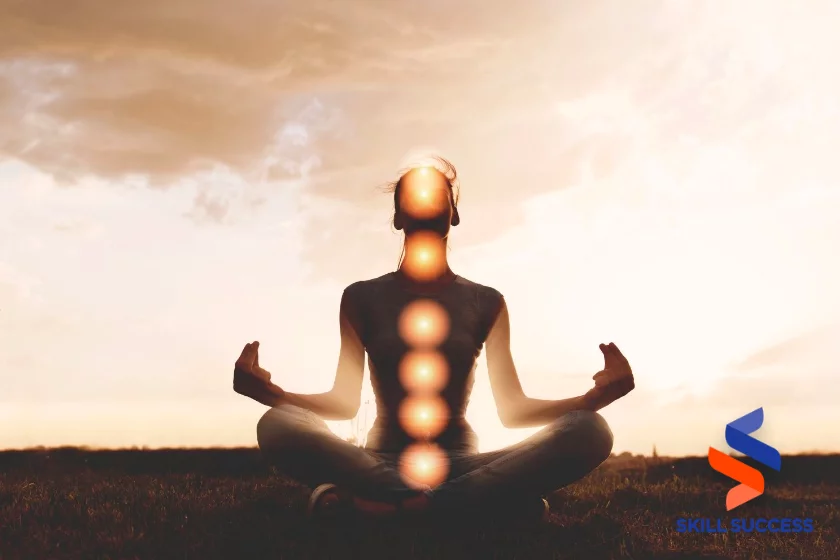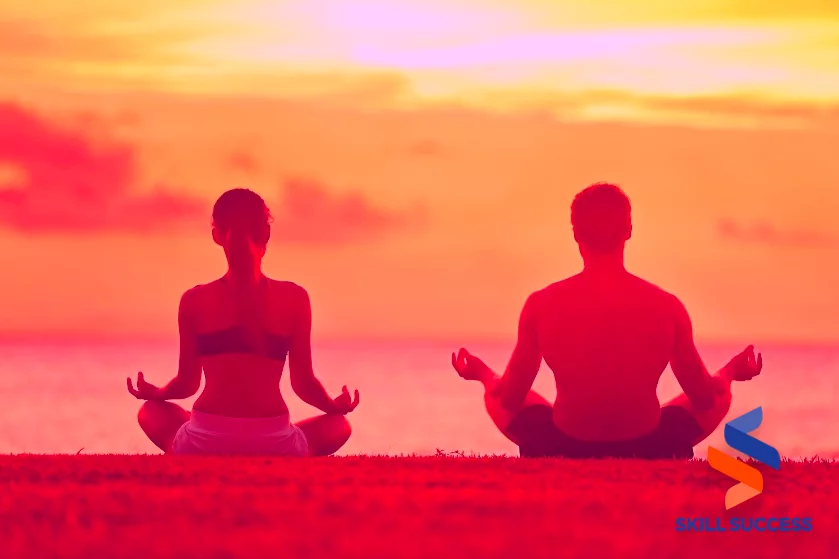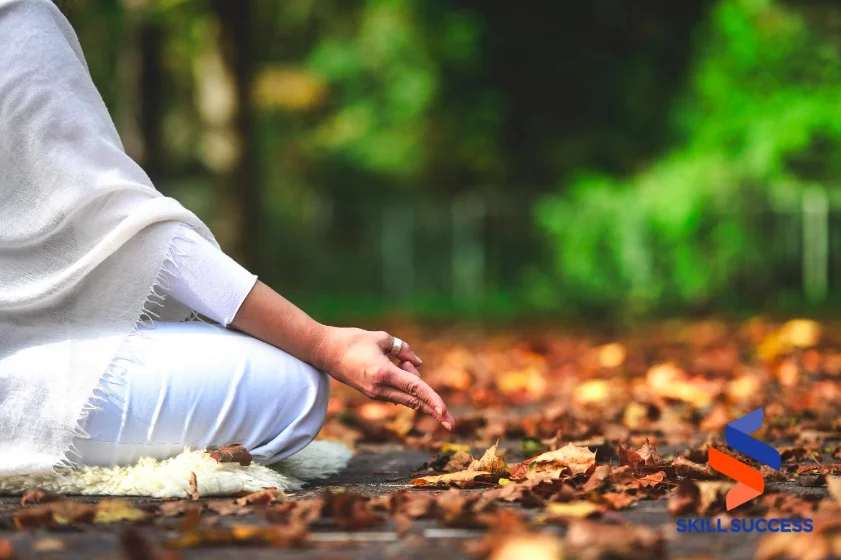Kundalini awakening is said to be the path to absolute consciousness and enlightenment. Awakening the Kundalini energy doesn't happen overnight, but rather, it is a gradual vigorous process that can take a long time. Only if you are ready to welcome this energy will it give you an eye-opening experience that will allow you to find peace and clarity in your life's journey.
There are several traditional techniques to prepare for this lengthy spiritual journey of rising to the Crown chakra. It involves guided chanting, meditation, yoga, and breath control. Only by mastering these elements can you attain the benefits of Kundalini.
Some natural events in our lives can trigger an awakening. May it be serendipitous moments or forced practice that can make you realize your highest potential. The potential to let go, move on, and accept the things and aspects in life that no longer speak to you or don't resonate in your life—leads to transcendence into your higher self.
There is a connection between life, death, and spiritual awakening, whether you are aware of it or not. Giving birth and experiencing death allows suppressed emotions and memories to manifest, and it can set forth a profound ripple effect on one's life.
Before understanding the Kundalini awakening stages, you must familiarize yourself with chakras—their relationship and their purpose in the body.
What Are Chakra Blockages?
Think of chakras as energy centers in the body. There are 114 chakras in the human body, two of which are outside the body, four lay dormant, and 108 are active. Among the 108, 54 represent female energy, and 54 are masculine. But gurus and yogis only focus on seven major chakras.
The lotus flower is the visible form of chakras, each associated with a specific number of petals. Each of these chakras has an equivalent color and meaning and is responsible for balancing the crucial elements in the body—spiritual, emotional, physical, and mental.
Root chakra or Muladhara
- Element = Earth
- Meaning = “I am.”
- Siddhi/Special power = Speech
- Level of awareness = Physical Being
The first chakra is at the base of the spine, which is where the kundalini energy lays dormant.
Most people don’t give importance to Muladhara, but it is the foundation of the physical structure of our energy. When a building has a weak foundation, it can crumble easily. Stabilizing this energy will give you a sense of security, contentment, and completeness while blocking the root chakra will leave you with insecurity and anxiety.
Sacral chakra or Swadhisthana
- Element = Water
- Meaning = “I feel.”
- Siddhi/Special power = Speech
- Level of awareness = Reproduction of Being
The second chakra is located above the genitals and associated with reproduction, sexuality, and sensuality.
A weak sacral chakra can manifest in physical issues like urinary tract infections, anemia, lower back pains, joint problems, and premenstrual syndrome. It also indicates a lack of creativity, sadness, addiction, and low self-esteem.
Solar plexus chakra or Manipura
- Element = Fire
- Meaning = “I do.”
- Siddhi/Special power = Inspired teaching
- Level of awareness = Formation of Being
Manipura means the “jewel city.” It controls the digestive system, abdomen, stomach, and spleen and is responsible for intuition and instinct.
When the solar plexus chakra is out of line, the body can develop digestion problems, and at the same time, it may lead to controlling behavior and anger issues.
Heart chakra or Anahata
- Element = Air
- Meaning = “I love.”
- Siddhi/Special power = Unity of Consciousness
- Level of awareness = Loving Beyond the Self
In Sanskrit, Anahata means “unstruck sound.” located in the heart area that drives relationships, love, compassion, and general emotions.
When the heart chakra is out of balance, it can present itself in many forms, both physically and emotionally, through heart and lung conditions, manipulative behaviors, trust issues, and depression.
Throat chakra or Vishuddha
- Element = Ether
- Meaning = “I speak.”
- Siddhi/Special power = Oneness
- Level of awareness = Expression of Being
The throat chakra represents the thyroid glands responsible for the proper functioning of the metabolism and immune system.
A person who has a healthy throat chakra can creatively communicate through different forms of self-expression. They have a great deal of trust towards themselves and the people they surround themselves with. On the contrary, a blockage of this chakra can lead to distrust, vulnerability, and inability to communicate.
Third eye or Ajna
- Element = Light
- Meaning = “I know.”
- Siddhi/Special power = Telepathy
- Level of awareness = Knowledge of Being or Self-realization
The location of the third eye chakra is in between the eyebrows, which represents imagination, knowledge, and dreams. Blocking this chakra energy can cause irregular sleep, paranoia, nightmares, and confusion.
Crown chakra or Sahasrara
- Element = Nothingness
- Meaning = “I Understand.”
- Siddhi/Special power = Higher Mind
- Level of awareness = Pure Being
Also known as nirvana in the Buddhist tradition, an active crown chakra has a high understanding of consciousness and spiritual development.
Lack of faith, close-mindedness, psychosis, disconnectedness, and chronic fatigue and pains are manifestations of a blocked crown chakra.
Specific asanas, guided meditations, aromatherapy, and chakra color visualization can lead to self-transcendence—improving self-confidence and motivation and giving you a sense of purpose in life.
Kundalini Awakening Stages
Arambha—The beginning
In this kundalini awakening stage, you lay the foundations to which the kundalini energy will pass through. This stage requires you to surrender any form of fear to purify the earth chakra that unties the Brahma Granthi—a knot that acts as a barrier to control the Kundalini energy from rising too fast.
Unclogging the Brahma Granthi is only attainable through Kapalabhati—an exercise using a “pumping” breath action—meditation, yoga exercises, and chants.
Ghata—Cleansing
The cleansing stage demands time, patience, and dedication to allow the Kundalini energy to flow freely through the Sushumna Nadi—the most vital channel that starts at the base of the spine to the crown of the head.
There are 72,000 Nadi in the body, and Sushumna, Ida, and Pingala Nadi have particular importance because all three unite at the third-eye chakra.
During this stage, you begin to challenge yourself to eliminate any form of guilt and acceptance of reality as you enter the second granthis, the Vishnu Granthi located between the heart and throat chakra.
Since Vishnu Grantha is associated with the ego, power, and greed, this stage forces you to let go of any worldly possessions that can influence you from merging with the universe’s energy.
Rudra Granthi—The awakening
The last and final leg of the Kundalini awakening stage: the third-eye awakening, which needs total focus to unknot the Rudra Granthi.
The Rudra Granthi is in between the heart and the third-eye chakra. To untie this knot, you must relinquish yourself from the concept of duality or the idea of separation from the universe and self. You must come to terms that everything is interconnected and is one with the universe, that every being are all working together as one collective consciousness.
The Kundalini energy will move to the crown chakra when the Rudra Granthi is untethered. At this point, you will enter a deep meditative state where you will experience heightened senses as your brain will function at the theta frequency parallel to the universe.
Recommended Courses For You
1. Guided Meditations On Kundalini Awakening

"Guided Meditations On Kundalini Awakening" is a comprehensive course designed for spiritual seekers interested in exploring Kundalini Awakening through guided meditations and chakra work. The course covers essential topics such as understanding Kundalini and chakras, diagnosing chakra blockages, methods to awaken Kundalini, and recognizing the signs and benefits of Kundalini Awakening.
What makes this course unique is its holistic approach to healing. It not only provides practical techniques for awakening Kundalini but also addresses the emotional and psychological aspects of well-being. The course's emphasis on healing from trauma and stagnated emotions sets it apart from other spiritual courses.
From personal experience, I found this course profoundly impactful. It offers a clear and accessible path to understanding and experiencing Kundalini Awakening. The guided meditations and practical exercises are particularly helpful in applying the concepts to daily life.
Who is this course for?
This course is ideal for those who have experienced emotional and physical trauma and are seeking holistic healing. It's also valuable for anyone living a healthy and happy life, as it provides tools to elevate their spiritual practice to the next level.
Take this course2. Tantra Meditations: Breathing And Kundalini

"Tantra Meditations: Breathing And Kundalini" offers a deep dive into Tantra meditations, focusing on breath, Kundalini, chakras, mantra, imagination, and the senses. This course is perfect for beginners seeking a holistic meditation practice, providing a strong foundation in spiritual techniques.
A distinctive feature of this course is its emphasis on the Vigyan Bhairav Tantra, a significant text in Kashmir Shaivism. The course covers the first five out of the 112 Tantric meditation methods, providing guided meditations for each technique. The focus on breath awareness and Kundalini energy visualization makes it stand out as a comprehensive introduction to Tantra.
In my opinion, this course is incredibly enlightening. The guided meditations are well-structured and easy to follow, making complex concepts accessible to beginners. The practical approach ensures that learners can immediately start incorporating these techniques into their daily practice.
Who is this course for?
This course is ideal for those interested in spirituality, regular meditation practitioners, and individuals seeking to realize a deeper connection with the divine. It requires no prior knowledge, making it accessible to anyone eager to explore the transformative power of Tantra meditations.
Take this course3. Color Therapy For Kundalini And Chakra Healing Course

"Color Therapy For Kundalini And Chakra Healing Course" offers a thorough exploration of how color therapy can balance and heal your chakras and aura for personal transformation. The course covers the fundamentals of Kundalini, chakras, light and color, and practical methods for assessing and balancing chakras using color therapy.
What makes this course distinctive is its accessibility and accreditation. Designed for beginners, it avoids jargon and simplifies complex concepts, making it easy to understand. Additionally, it is accredited by Virtued Academy International, providing recognized certification and adding credibility to your learning experience.
I found this course to be incredibly enlightening and practical. The straightforward explanations and guided techniques make it easy to apply the principles of color therapy to your own life. The accreditation adds a level of professionalism and assurance in the quality of the training.
Who is this course for?
This course is ideal for anyone looking to use color therapy to balance their chakras and achieve personal transformation. It’s perfect for those with no prior knowledge of Kundalini, chakras, or color therapy, ensuring that everyone can benefit from this transformative practice.
Take this courseTo support your spiritual practice, consider using the Todoist app. It helps you manage tasks and goals, making it easier to integrate Kundalini practices into your routine. Stay focused and organized with Todoist, enhancing your path to Kundalini Awakening.
How did you experience Kundalini awakening?
My Kundalini awakening experience, as with a lot of people’s experiences, was quite a challenging episode. For me, it happened in the serenity of a two-week-long yoga retreat, and although I did not go to the retreat with the explicit intention of going through a Kundalini awakening, I did want to connect more with my divine feminine energy - through thorough practice and cleansing alongside yoga teachers, I was able to achieve this.
For me, it felt like a building of sharp, painful energy at the base of my spine, surrounding my Sacral chakra and root chakra points. I began to experience muscle spasms, followed by the sensation of pins and needles, which were an extreme temperature (though I couldn’t tell if they were hot or cold). Everything became just a bit too much to handle—as though the brightness of the world had been turned up to maximum.
Hannah Pierce | Co-Founder, Luciding
While I was meditating, energy passed through my root chakra when this happened to me. It felt like a vibration and a snake crawling down upside. My thoughts went utterly blank. I smelled something pleasant and felt calmer. Full-body orgasms are common, but they are more sensual than sexual.
Daily meditation, pranayama and breath control, and gratitude can all help awaken your kundalini. There are numerous options, but I usually meditate and practice pranayama every day.
Kundalini awakening is a mystical experience that increases your intuition and alertness. It also helps you remember things. It also makes you more spiritual and generous. Your willpower will improve, assisting you in achieving your goal. Now I have different levels of confidence in my life.
Emily Newman | Founder, Best of Psychic Readers
Starting a regular Bikram yoga practice is what kicked off my initial Kundalini experience back in 2012.
A few times a week, at night before falling asleep I'd feel intense tingling and vibrating up and down in my spine to the top of my head, followed by a sensation like my soul was lifting up, separating a few feet above my body. This continues to recur a few times a year even without Bikram yoga.
I've since been able to access deeper levels of wisdom, claircognizance, empathy, understanding, consciousness and awareness. I often find myself taking intuitive leaps into the unknown, and then the lily pads appear in front of me as I go. This has been a wonderful gift as I continue to grow and evolve my healing practice to be totally aligned with my mission, vision and purpose!
Jenna Volpe | Dietitian and Holistic Energy Healing Practitioner, Wholeistic Living
I have a strong passion for psychic and spiritual contact, and find both meditation and yoga help me to be more connected. Practicing yoga daily, channelling my spirituality through mediation, and clearing emotional barriers led to my Kundalini awakening.
After a disturbed night, I awoke feeling completely changed, like I was plugged into the universe. Everything that I had been focussed on seemed unimportant. My awakening has allowed me to shed the social pressure of material things. I no longer place a high value on the latest trends, cars, or beauty products. I feel I am enough, and treasure all the experiences my soul has within my body.
Amy Bos | COO, Medium Chat
Key Takeaways
Understanding the stages of Kundalini Awakening is crucial for anyone interested in spiritual growth and personal transformation. By learning about these stages, you can navigate the process more safely and effectively, recognizing signs and managing experiences as they arise. This knowledge helps in balancing your physical, emotional, and psychological well-being, ensuring a harmonious and profound spiritual journey.
To deepen your understanding and access a wide range of courses on Kundalini Awakening and other personal development topics, subscribe to the Skill Success All Access Pass. With this pass, you'll gain unlimited access to an extensive library of courses designed to support your growth and learning. Take the next step in your spiritual journey and unlock your full potential with Skill Success.
Editor's note: This post was originally published in May 2022. It has been updated for freshness and accuracy.


